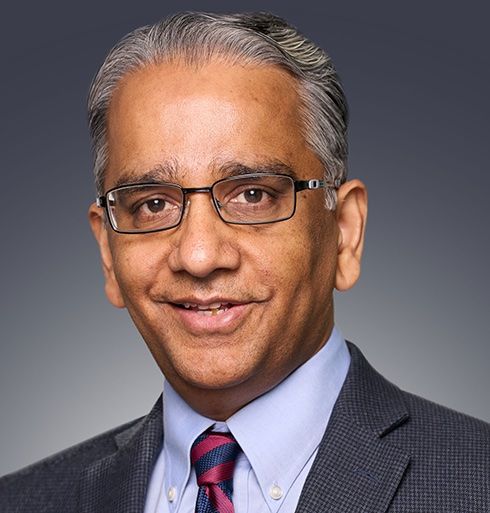Commentary
Article
A deep dive into the intersection between primary and culturally competent care
Author(s):
Integrating cultural competence into primary care is essential for addressing the unique needs of diverse populations, especially in underserved communities.
Khaliq Siddiq, MD

In March 2023, the Biden administration capped the price of insulin as part of the Inflation Reduction Act. This measure limits the monthly cost of insulin to $35 for Medicare patients, helping people with diabetes afford their essential care.
This groundbreaking act serves as a prime example of interventions aimed at making essential health care, such as diabetes management, more accessible and affordable for those in need. The U.S. Department of Health and Human Services reported that if the insulin cost-sharing limits of the Inflation Reduction Act had been in place in 2020, approximately 1.5 million Medicare recipients would have saved nearly $761 million, averaging about $500 per beneficiary.
This significant impact underscores the broader potential of primary care reform in enhancing health care access, particularly in managing chronic illnesses.
Understanding primary care and its importance
Primary care, often the initial point of contact in the health care system, is crucial for early illness recognition and preventive measures. It serves not just as the gateway to further health care services but also as a vital platform for health education and fostering long-term relationships between patients and providers.
Effective primary care benefits everyone, especially those with chronic conditions. For instance, the Centers for Disease Control and Prevention indicates that 60% of U.S. adults have at least one chronic disease, while 40% have two or more, contributing significantly to the nation’s $4.1 trillion in annual health care costs. These statistics not only highlight the health care burden but also the potential of primary care in disease prevention and management.
However, in 2015, only 8% of U.S. adults aged 35 or older received all recommended high-priority clinical preventive services, pointing to the underutilization of available preventive treatments.
What does primary care look like practically?
At its core, primary care encompasses any measure that prevents the development of chronic illnesses and conditions. This often involves preventive screenings such as blood pressure checks, dietary counseling, fall prevention, immunizations, and more. These steps, among others, are vital in catching potential health issues before they escalate.
Continuous monitoring is essential for effective primary care. Regular implementation of these strategies is crucial to prevent underlying health problems from being overlooked. Providers who are committed to primary care are the ones who follow up, schedule future appointments and remain available to their patients. Many will ensure that their patients have clear next steps and know how to access their health care portal or other recommended care centers.
Those who prioritize primary care also coordinate with other health care providers to fully comprehend a patient’s medical history. Often, a lack of due diligence by health care providers can lead to additional complications. Treating patients holistically is fundamental in primary care, and understanding a patient’s cultural background is a significant aspect of this approach. This leads us to our next point.
How to provide culturally competent care
Integrating cultural competence into primary care is essential for addressing the unique needs of diverse populations, especially in underserved communities. Cultural barriers to accessing health care, often reinforced by historical and socioeconomic factors, can impede access to essential health care services. Overcoming these barriers is crucial for equitable health care delivery.
To improve accessibility and cultural competence in primary care, several strategies can be adopted:
1. Broaden health care approaches
Nontraditional approaches to health care can reduce entry barriers for people from minority cultures. Eastern methods — such as cupping, acupuncture, herbal medicine and use of red ginseng — have been used by communities for centuries and can be integrated into primary care. The debate between Eastern medicine versus Western medicine should not hinder the recognition of the potential benefits of nontraditional health care approaches. Eastern modalities, serving as complementary therapies alongside traditional treatments, can offer alternatives for pain relief and stress reduction. They also support preventive care and provide a more holistic health view that includes community, culture and wellness.
2. Utilize tailored health care plans
Programs like Chronic Condition Special Needs Plans (C-SNP) under some Medicare Advantage plans are designed for individuals with chronic health conditions. These plans prioritize accessible, culturally competent primary care by coordinating care across various providers and aligning with the linguistic and cultural needs of patients. Moreover, these plans can leverage community resources to extend care into home settings, thus supporting people in their own environments.
3. Engage with communities
Building strong ties with communities is essential for health care providers to offer culturally relevant services and overcome cultural barriers to health care access such as communication, transportation and financial barriers. Initiatives such as the National Health Service Corps work to place health care professionals in areas with limited access to care, thus bridging gaps in health care access.
The Inflation Reduction Act’s impact on diabetes care exemplifies the broader importance of primary care in managing chronic diseases and reducing health care costs. By enhancing accessibility and cultural competence, primary care can become more inclusive, addressing the unique needs of diverse populations and ultimately leading to better health outcomes for all.
Khaliq Siddiq, M.D., is the chief medical officer at Clever Care Health Plan. He has more than 25 years of progressive experience with a strong foundation in medical program management, strategic planning and team building. Siddiq is passionate about creating programs and initiatives to deliver high-quality health care in underserved and underrepresented communities.





